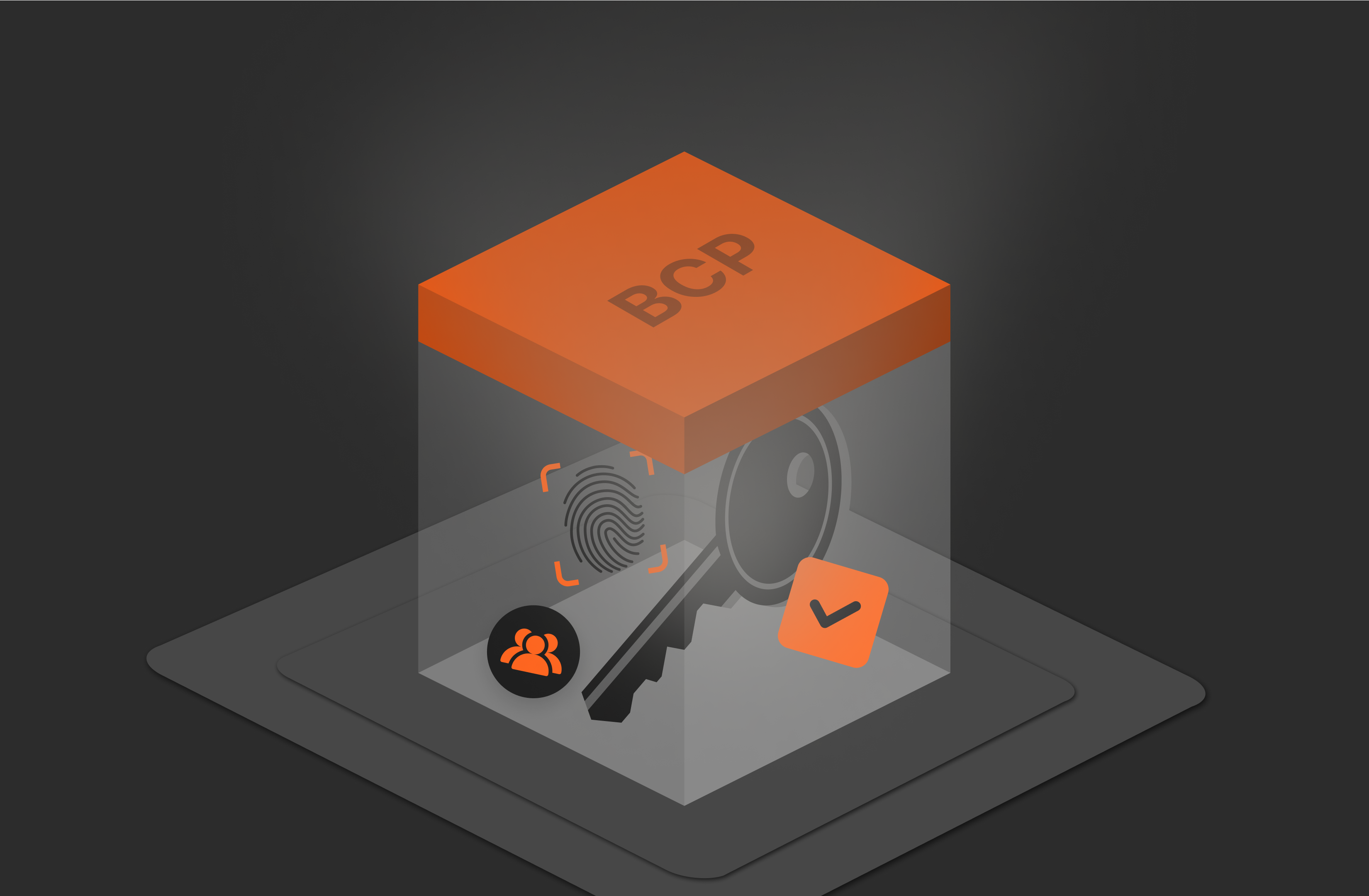Summary
In the event of a cyberattack or natural disaster, a well-structured business continuity plan can help organizations maintain critical functions during the disruption and recover efficiently after it.
In today’s digital landscape, businesses rely almost completely on technology to operate efficiently. However, with the increasing sophistication of cyber threats, such as ransomware attacks, phishing scams, and data breaches, organizations must take proactive steps to ensure business continuity. A cyberattack can cause severe financial loss, reputational damage, and operational disruption. Without a well-structured business continuity plan (BCP), recovery from such incidents can be challenging.
In this article, we’ll explore the significance of business continuity, examine key cyber threats, and provide actionable strategies to help organizations build resilience against disruptions.
Understanding Business Continuity
Business continuity refers to an organization’s ability to maintain essential operations during and after a disruption, whether caused by cyber threats, natural disasters, or system failures. A strong business continuity plan (BCP) integrates several key components to ensure organizational resilience. These components include risk management, business impact analysis, crisis communication protocols, alternate operating procedures, regular testing and updating, and disaster recovery. By encompassing these elements, a BCP ensures that an organization can maintain critical functions during disruptions and recover efficiently afterward.
A well-structured BCP helps organizations:
- Minimize downtime: Whether facing a cyberattack, hardware failure, or natural disaster, a comprehensive BCP ensures that critical operations remain functional.
- Protect data and assets: Security measures, backups, and failover strategies reduce the risk of data loss and unauthorized access.
- Ensure regulatory compliance: Many industries require robust continuity plans to meet compliance standards such as GDPR, HIPAA, and SOC 2.
- Preserve customer trust: The ability to recover quickly from disruptions enhances an organization’s credibility and maintains customer confidence.
Key Threats to Business Continuity
Understanding the various threats that can disrupt business operations is crucial for developing a robust continuity plan. These threats encompass both cyber incidents and physical events:
Ransomware Attacks
Ransomware encrypts an organization’s files and demands payment for decryption keys. Without adequate backup solutions, businesses may face prolonged downtime or be forced to pay the ransom, which does not guarantee data recovery.
Phishing Scams
Phishing emails trick employees into revealing sensitive information, such as login credentials or financial data. A successful phishing attack can compromise critical systems and lead to fraud or data breaches.
Distributed Denial-of-service (DDoS) Attacks
DDoS attacks overwhelm a company’s network with excessive traffic, causing service disruptions and preventing legitimate users from accessing resources.
Insider Threats
Disgruntled employees or careless handling of sensitive information can lead to data leaks, fraud, or system compromise.
Supply Chain Attacks
Cybercriminals exploit vulnerabilities in third-party vendors or software providers to infiltrate business networks, posing a significant risk to operations.
Natural Disasters
Events such as earthquakes, floods, or hurricanes can cause physical damage to infrastructure, leading to operational disruptions.
Man-made Incidents
Situations like power outages, fires, or sabotage can adversely affect business operations.
Developing a Business Continuity Plan
A well-structured BCP outlines strategies to minimize the impact of cyber threats and ensure rapid recovery. Key components include:
- Conducting a risk assessment
Identify potential cyber threats, assess their likelihood, and evaluate their potential impact on business operations. Understanding risk exposure helps prioritize protective measures.
- Performing a business impact analysis (BIA)
Determine how disruptions affect business processes, identify critical functions, and establish acceptable recovery time objectives (RTO) and recovery point objectives (RPO).
- Defining a response strategy
Develop action plans for responding to cyber incidents, including:
- Immediate response steps to contain threats
- Communication protocols for employees, customers, and stakeholders
- Data backup and recovery strategies
- Establishing redundant systems and backup solutions
Implement redundant systems to ensure that critical applications remain available during cyber incidents. Use cloud-based and off-site backup solutions to protect data from ransomware attacks or accidental loss.
- Assigning key roles and responsibilities
Clearly define who is responsible for executing different aspects of the BCP, from IT security teams to executive leadership. Having a structured response team ensures a coordinated recovery effort.
Implementing Cybersecurity Measures
While having a BCP is essential, preventing cyber threats before they cause damage is equally important. Organizations should integrate robust cybersecurity measures to strengthen their defense against attacks.
- Deploy advanced threat detection and prevention tools
Use firewalls, intrusion detection systems, and endpoint security solutions to monitor and block suspicious activity in real time.
- Enforce strong authentication methods
Implement multi-factor authentication (MFA) to reduce the risk of unauthorized access. Password policies should require complex credentials and regular updates.
- Encrypt sensitive data
Data encryption ensures that even if information is compromised, it remains unreadable to unauthorized users.
- Keep software and systems updated
Regularly patch software vulnerabilities to prevent cybercriminals from exploiting outdated systems.
- Implement network segmentation
Divide networks into isolated segments to prevent lateral movement in case of a breach, limiting the attacker’s ability to access critical systems.
Employee Training and Awareness
Employees are often the first line of defense against cyber threats. Organizations should prioritize cybersecurity training to reduce the risk of human error leading to security incidents.
- Conduct regular security awareness training
Educate employees on recognizing phishing emails, social engineering tactics, and safe browsing habits.
- Simulate cyberattack scenarios
Tabletop exercises and phishing simulations help employees practice responding to cyber threats in a controlled environment.
- Establish clear security policies
Define protocols for data handling, access controls, and incident reporting to ensure compliance with security best practices.
- Encourage a security-first culture
Foster a culture where employees feel responsible for cybersecurity, encouraging them to report suspicious activity without fear of repercussions.
Regular Testing and Updating
A business continuity plan is only effective if it’s tested and updated regularly to address new threats and organizational changes.
Perform different types of continuity tests, including:
- Tabletop exercises: Simulated discussions on how to respond to a cyber event
- Full-scale simulations: Real-world scenarios to test system resilience and recovery procedures
- Backup restoration tests: Ensuring that data backups are functional and recoverable
As cyber threats evolve, update the BCP to include new security measures, changes in infrastructure, and lessons learned from previous incidents.
Conclusion
As cyber threats continue to escalate, business continuity planning has become a necessity. Organizations must adopt a proactive approach by implementing robust cybersecurity measures, regularly testing recovery procedures, and fostering a culture of security awareness. A well-prepared business can minimize downtime, protect valuable data, and maintain customer trust, even in the face of cyberattacks.
Pure Storage offers advanced business continuity solutions to help organizations safeguard their data and maintain uninterrupted operations. With features like Pure1® proactive anomaly detection, ActiveCluster™ for zero downtime failover, and SafeMode™ Snapshots for data protection; Evergreen//One™ to instantly provision isolated recovery environments; and cloud-based disaster recovery solutions, businesses can enhance resilience against cyber threats.

Cyber Resilience, Pure and Simple
Fortify your data and guarantee uninterrupted business operations.
Minimize Your Risk
Learn how Pure Storage solutions can help you run your business without disruption.






